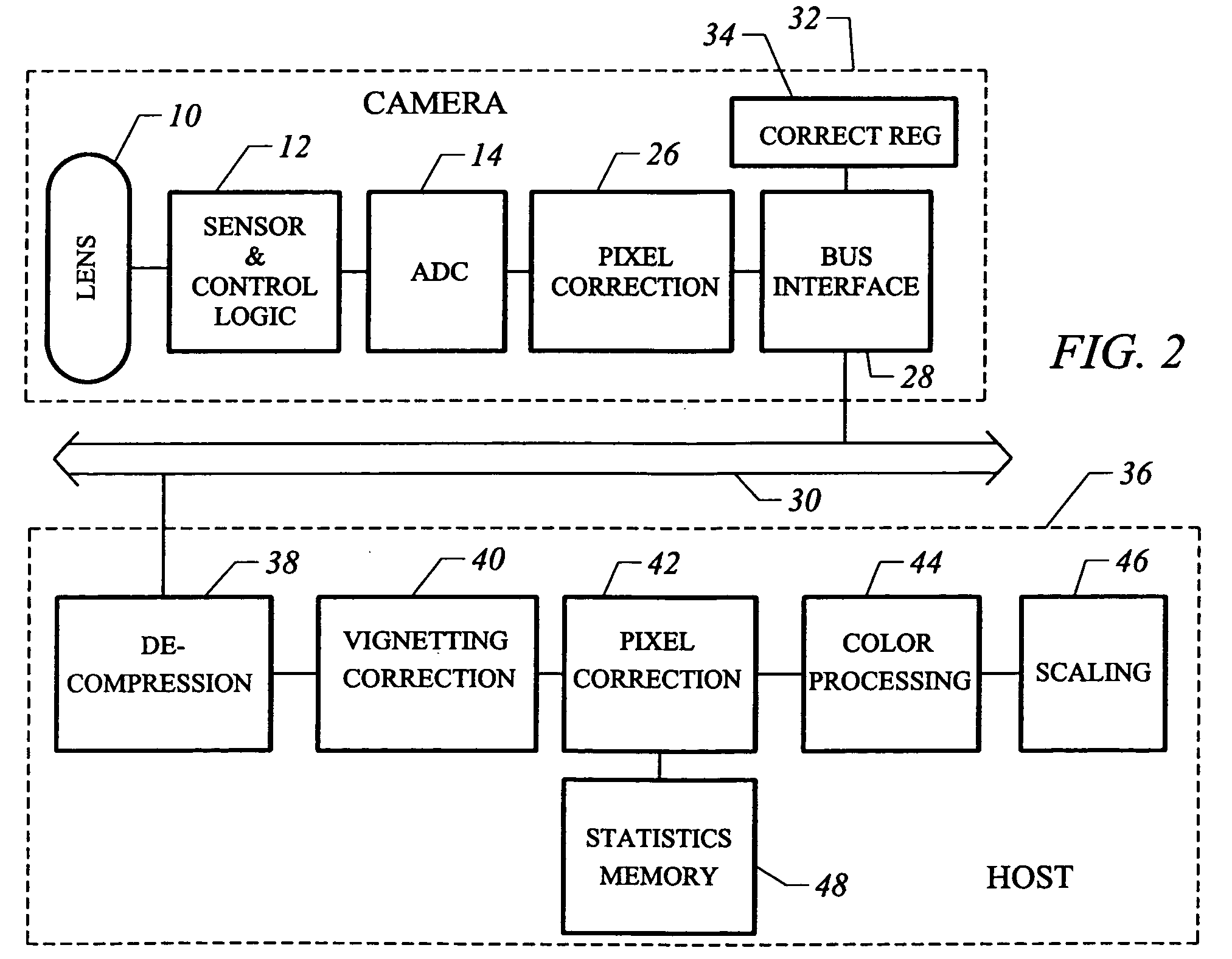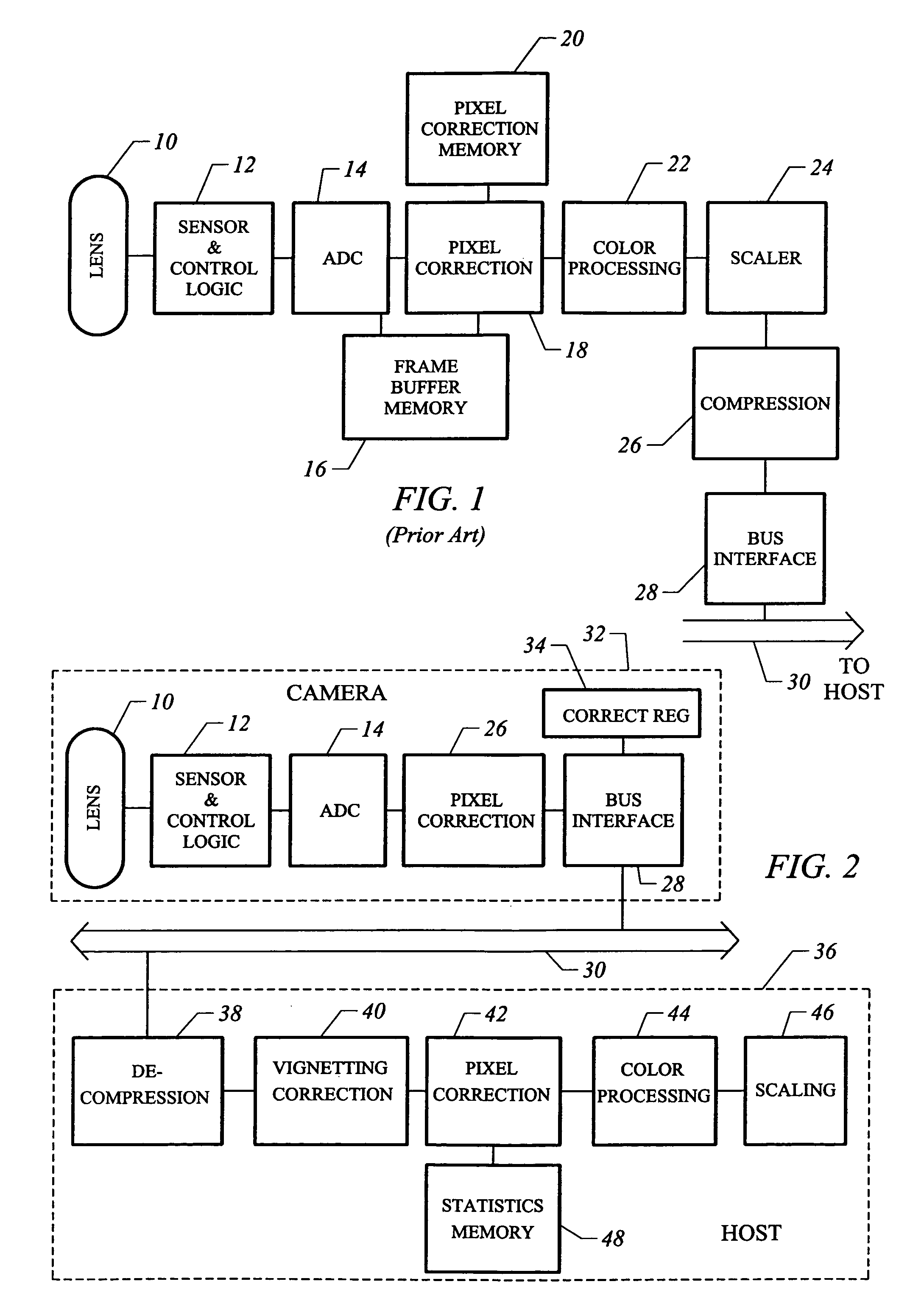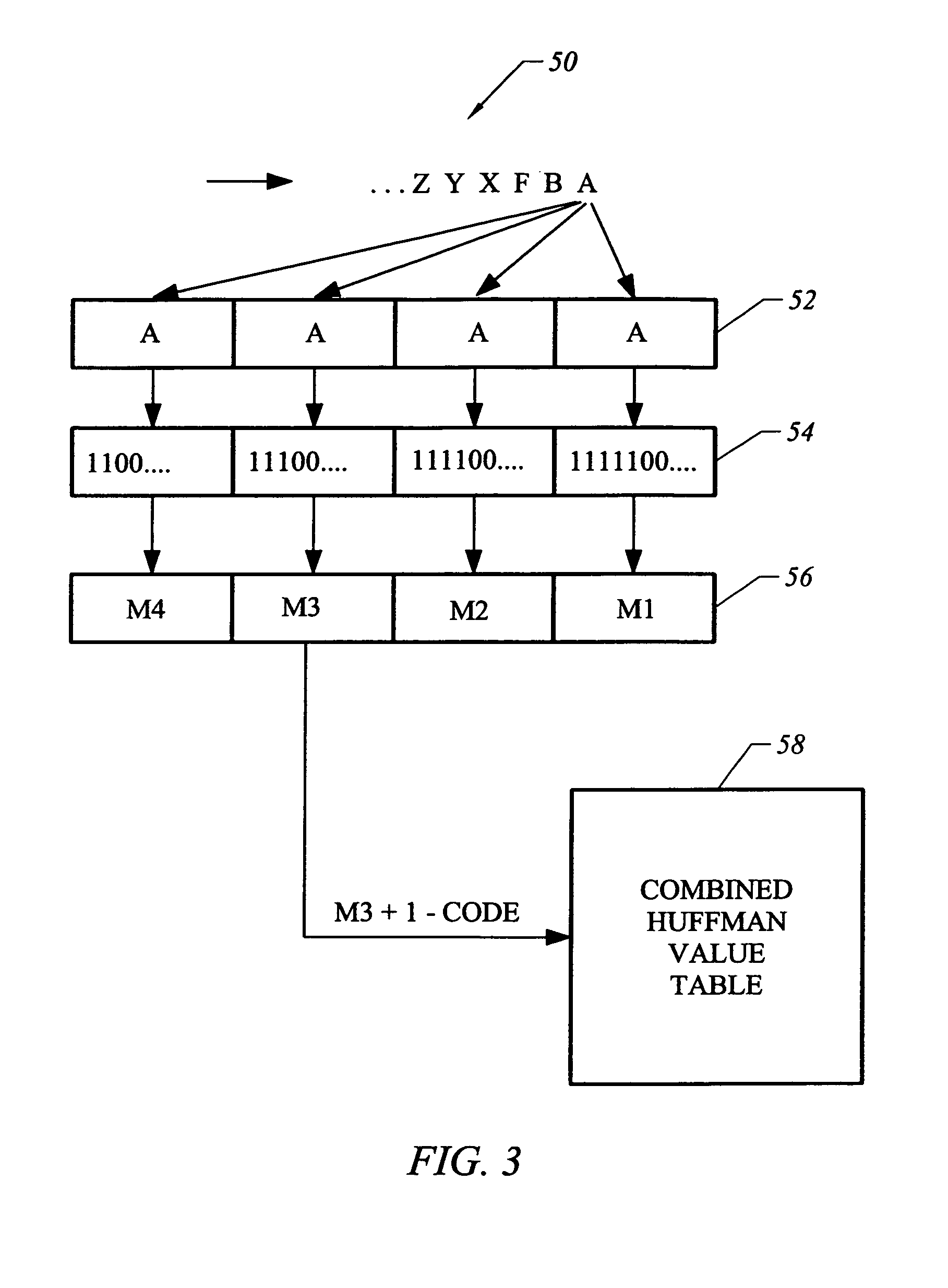Video camera with major functions implemented in host software
a video camera and host software technology, applied in the field of video cameras, can solve the problems of reducing the amount of data that has to be compressed and sent over the bus, limiting the bandwidth of data that can be sent, and defective detector positions that do not properly collect light, etc., to achieve the effect of increasing the volume of raw data, reducing the cost, and increasing the bandwidth
- Summary
- Abstract
- Description
- Claims
- Application Information
AI Technical Summary
Benefits of technology
Problems solved by technology
Method used
Image
Examples
Embodiment Construction
I. Overall System.
[0040]FIG. 2 is a block diagram of one embodiment of the invention. A camera 32 includes a lens 10, a sensor and control logic 12, and an ADC 14, as in the prior art. However, the other major functions are removed, except for a compression block 26 and bus interface 28. In addition, a correction register 34 is added to store a value corresponding to the vignetting of lens 10.
[0041]The camera connects over a shared bus 30 to host 36. In host 36, the blocks shown are programming blocks executed by the processor of host 36. These are a decompression block 38, a vignetting correction block 40, a pixel correction block 42, a color processing block 44 and a scaling block 46. Also shown is a statistics memory 48, which can be a portion of the host memory, for storing statistics information on pixels needing correction.
II. Huffman Decompression.
[0042]Preferably, the processor used by host 36 includes the ability to perform operations on multiple packed pixels in a single r...
PUM
 Login to View More
Login to View More Abstract
Description
Claims
Application Information
 Login to View More
Login to View More - R&D
- Intellectual Property
- Life Sciences
- Materials
- Tech Scout
- Unparalleled Data Quality
- Higher Quality Content
- 60% Fewer Hallucinations
Browse by: Latest US Patents, China's latest patents, Technical Efficacy Thesaurus, Application Domain, Technology Topic, Popular Technical Reports.
© 2025 PatSnap. All rights reserved.Legal|Privacy policy|Modern Slavery Act Transparency Statement|Sitemap|About US| Contact US: help@patsnap.com



